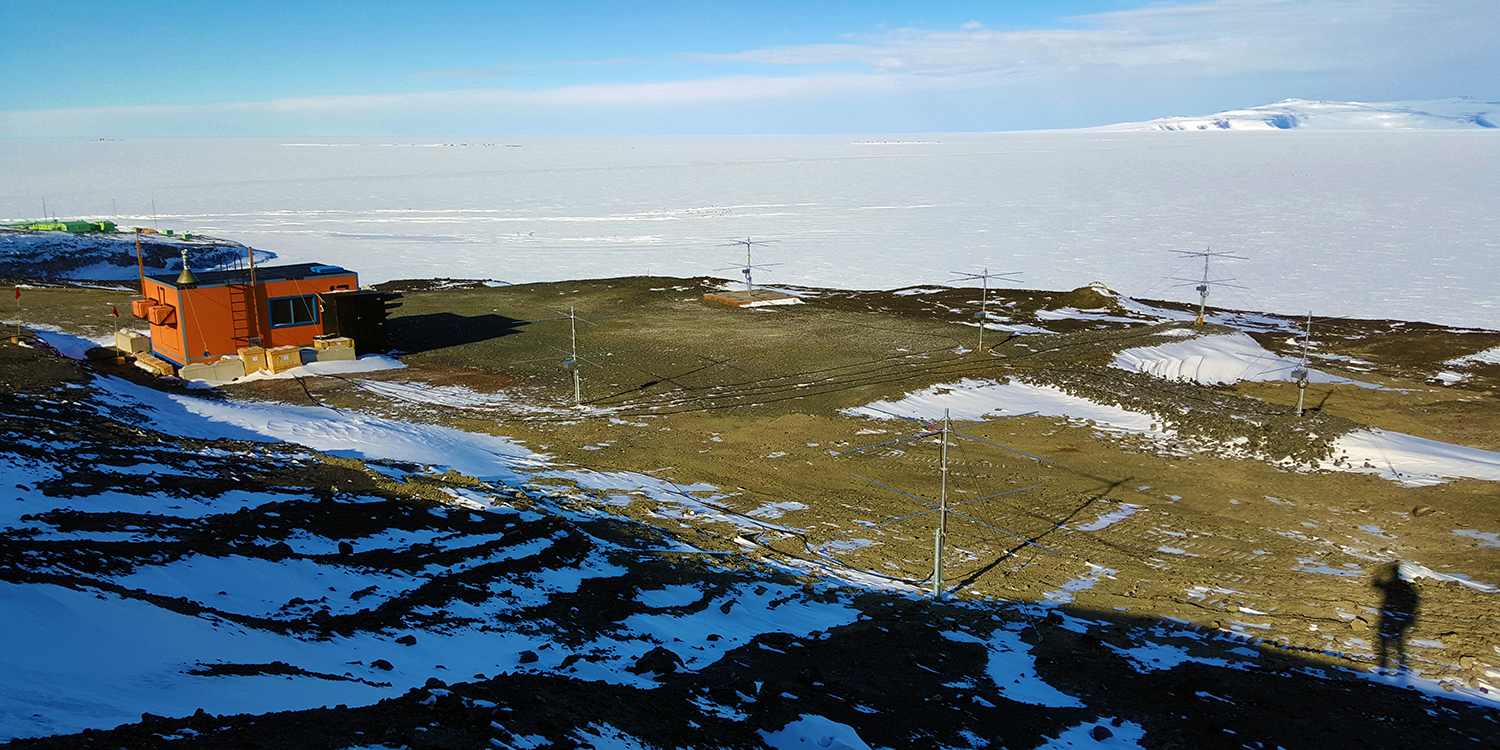Radar Specifications
| Operating Frequency | 36.170 MHz |
| Peak Power | 8 - 32 kW |
| Pulse Width | 1 - 200 us |
| Pulse Repetition Frequency | 1 Hz to 50 kHz |
| Transmit Antenna | One circularly polarized, 2-element crossed-dipole |
| Receive Antennas | Five circularly polarized, 2-element crossed-dipoles |
The University of Colorado Boulder's Antarctic Meteor Radar was installed at McMurdo Antarctica in the 2017/2018 summer season. The instrument is a SKiYMET-type radar built by Genesis Software Inc. of Adelaide, Australia, jointly developed with MARDOC Inc.
Radio reflections from underdense meteor trials give important information about the meteors themselves, the upper atmosphere, and the near-space environment. This instrument can be used for meteor astronomy (flux rates, orbital statistics, shower source radiants), space research and debris assessment, and atmospheric physics (winds, temperature, diffusion, and climate impacts).


